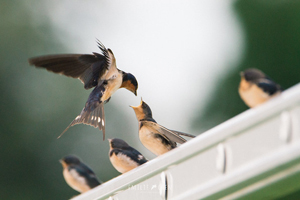Wild birds can be extremely beneficial to farms, as many of them feed on pest species and support a vibrant on-farm ecosystem. Unfortunately, agriculture is the leading threat to bird species facing extinction.
 |
Real organic farmers encourage on-farm biodiversity, including habitat for birds. These kinds of cultural practices have wide-ranging benefits, such as providing habitat for other insect predators and pollinators and even acting as a carbon sink in some instances.
Supporting family-scale organic farmers is a vote for these kinds of holistic practices. Interested eaters can also ask their local farmers what practices they employ to support wild species—including birds—on their farms.
Farming With Wild Birds: Practicing Co-Existence
Rewilding Earth
by Jo Ann Baumgartner
Farming is one of those pursuits that requires creative thinking. So many factors are juggled for a good harvest and a healthy farm, including considerations that support or exclude wild nature. The challenge is balancing the farm’s future sustainability with growing and selling products that do not push the landscape beyond its limits. As Aldo Leopold said, “A good farm must be one where the wild fauna and flora has lost acreage without losing its existence.”
Most farmers are aware of raptors scanning for prey as they soar, hunting from a perch or following in the wake of the tractor to scoop up pest rodents and insects that are disturbed. The curious farmer wonders why Nuttall’s Woodpeckers and other songbirds are present in their walnut and apple orchards (studies show a reduction by birds of 41-97% of codling moth), why Savanah Sparrows and other songbirds are in their alfalfa fields (the birds reduce alfalfa weevils by 33%), and if those aerial insectivores above the farm—the Barn Swallows—are eating crop pest insects (pests can be 18% of their diet). There are tools now that use DNA analyses and statistical models to make more sense of how beneficial some birds can be. Compelling on-farm research done over the years has reported 220 bird species in North America consuming agricultural farm pests, which makes a great case for why farmers should take a second look at those birds flying by, and encourage them to stop and feed on crop pests.

